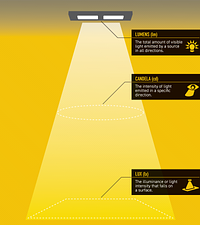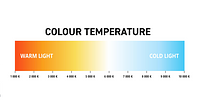Exploring Illumination
Exploring Illumination: A Brief Guide to the Measurements Used for Light Output
Good lighting is an essential requirement for all work places, especially for those located within Hazardous Areas; it helps workers clearly see their surroundings, equipment, and potential hazards, reduces the likelihood of accidents, ensures that workers can see clearly, read instrumentation, and perform tasks accurately. Inadequate lighting can lead to errors, mistakes, and reduced productivity. Good lighting is also needed to maintain the health and wellbeing of workers – to protect them from the eyestrain, migraines, and headaches which can also be the result of poor lighting. The required illuminance levels in workplaces can vary depending on location and the tasks being performed, and locally relevant safety standards and guidelines should always be consulted for recommended lighting levels.
The first step to ensuring you have good lighting, is to measure the exisiting illuminance in your work area (or determine the desired level of illuminance for future lighting projects). Illuminance is measured in many different ways and below we investigate at some of the more commonly used measurements.
- Lumens: Shedding Light on Brightness
Lumens are the most commonly used measurement for quantifying the brightness of a light source. It represents the total amount of visible light emitted by a source in all directions. The higher the lumen value, the brighter the light. Lighting manufacturers will indicate the lumen rating of their products on their websites, catalogues and instructions etc. This measurement helps you choose the appropriate light fitting for the desired level of illumination in a specific area
- Candela: Spotlight on Directional Intensity
Unlike lumens and lux, which measure the overall light output and its spread, candela measures the intensity of light emitted in a specific direction. This measurement is particularly relevant for directional light sources like spotlights and torches. One candela is roughly equivalent to the light intensity of a single candle. By understanding the candela rating, you can determine how well a light fitting focuses light in a specific direction
- Lux: Measuring Illuminance
While lumens quantify the total amount of light produced, lux measures the illuminance or light intensity that falls on a surface. It considers the area over which the light is spread. One lux is equal to one lumen per square meter. Lux measurements are valuable for understanding how well a light fitting can provide adequate lighting in a specific space. For example, when new lighting projects are being specified, a specific lux measurement will often be required

The lux figure is a vital metric when designing workplace illumination and is directly related to human visual perception and performance. Different products have different beam patterns and give different levels of illumination at specific distances - the lumens figure, which measures total light output from the light source (in any direction), will not give you this.
For this reason, Wolf will give you lux figures for every product, so that you know the amount of illumination delivered from each product at a specified distance.
- Colour Temperature: Gauging Warmth and Coolness
Light isn't just about brightness; it's also about the quality of the light in terms of its colour temperature. Colour temperature is measured in Kelvins (K) and indicates whether the light appears warm (lower Kelvin values) or cool (higher Kelvin values). For instance, a traditional incandescent bulb emits a warm, cosy light at around 2700K, while daylight often measures around 5000K. Choosing the right colour temperature can greatly affect the ambiance and functionality of a space

- Colour Rendering Index (CRI): Unveiling True Colours
The Colour Rendering Index measures how accurately a light source represents the true colours of objects compared to natural sunlight. It's rated on a scale of 0 to 100, with higher values indicating better colour accuracy. Light fittings with a high CRI are crucial in hazardous work areas where accurate colour perception is essential, such as where wiring might take place
-
Wattage: Beyond Brightness
Wattage is a measurement of the electrical power consumed by a light fitting, not its actual light output. In the past, people often used wattage as an indicator of brightness, assuming that higher wattage meant brighter light. However, with the advent of energy-efficient LED technology, this correlation is no longer accurate. When choosing light fittings, it's more effective to focus on lumens and other measurements that directly relate to light output
Understanding how to measure light output from light fittings involves considering various metrics that collectively define the quality and effectiveness of the lighting in a given space. By paying attention to lumens, lux, candela, colour temperature, CRI, and moving beyond traditional measures like wattage, you can make informed decisions when selecting the right light fittings for your needs.
Wolf will give you lux figures for every product, so that you know the amount of illumination delivered from each product at a specified distance.